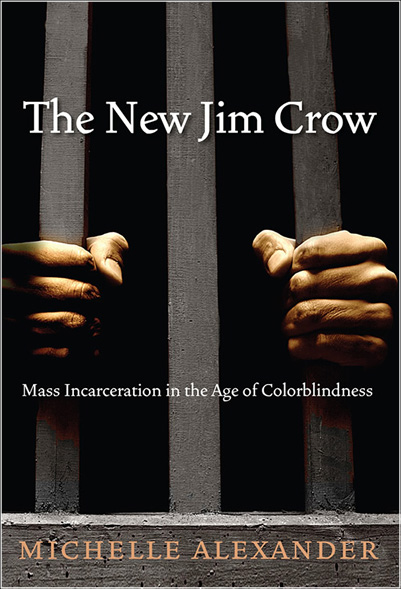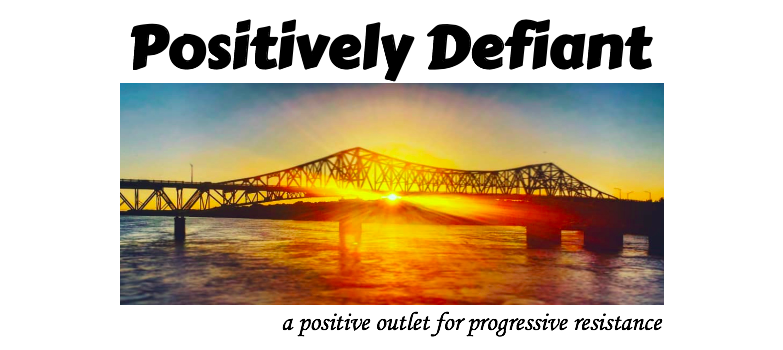
The New Jim Crow: Mass Incarceration in the Age of Colorblindness by Michelle Alexander (2010)
Recommendation: High
Blurb:
“Jarvious Cotton’s great-great-grandfather could not vote as a slave. His great-grandfather was beaten to death by the Klu Klux Klan for attempting to vote. His grandfather was prevented from voting by Klan intimidation; his father was barred by poll taxes and literacy tests. Today, Cotton cannot vote because he, like many black men in the United States, has been labeled a felon and is currently on parole.”
As the United States celebrates the nation’s “triumph over race” with the election of Barack Obama, the majority of young black men in major American cities are locked behind bars or have been labeled felons for life. Although Jim Crow laws have been wiped off the books, an astounding percentage of the African American community remains trapped in a subordinate status–much like their grandparents before them.
In this incisive critique, former litigator-turned-legal-scholar Michelle Alexander provocatively argues that we have not ended racial caste in America: we have simply redesigned it. Alexander shows that, by targeting black men and decimating communities of color, the U.S. criminal justice system functions as a contemporary system of racial control, even as it formally adheres to the principle of color blindness. The New Jim Crow challenges the civil rights community–and all of us–to place mass incarceration at the forefront of a new movement for racial justice in America.
Bo’s Review:
A tough book to read. But none of us like to hear truths that make us uncomfortable.
The New Jim Crow describes a system created to specifically target minorities.
Why is drug use found in similar numbers across all types of people, but a disproportionately larger number of minorities are convicted of these crimes? While we are led to believe that these efforts are going after the men at the top, why are so many lower level distributors, and many, many mere users targeted and incarcerated? Why is so much money being thrown at nabbing a recreational user when so many bigger crimes need to be taken care of?
Michelle Alexander describes how rules governing the “war on drugs” were often vague, often encroaching on peoples rights. The 4th amendment is often ignored. Stories about how the war on drugs is really funded, about police corruption, about the seizing of property of innocent people. The 8th amendment is butchered, too – by sentencing that is extremely disproportionate to crimes. She talks about the massive increase in incarceration in the last 20-30 years – that is mostly related to minor, non-violent drug offenses perpetrated by people of color (even though rates of drug use among people of different races are much closer than what is usually reported). And once people are arrested, even for the most minor of offenses, the system is designed to keep them incarcerated. They are labelled criminals all their lives, even if crimes were minor or arrests and convictions suspect. And these men are now discriminated against, legally, for the rest of their lives.
And the stories are not just anecdotal. Ms. Alexander backs up her claims with statistics and research. She does give theoretical examples, but based on the real world examples and research, they seem not unlikely.
Of course, the point of this book is the number of rights that can be legally taken away from you if you’ve been convicted, and sometimes even just accused of a crime. This creates a whole new underclass of people of color. I personally cannot imagination the amount of shame this brings on people. Even in their own communities. Alexander writes, “Far from being a place of comfort or refuge, churches can be a place where judgement, shame, and contempt are felt most acutely.” I didn’t realize that this was just as true in black churches as in white churches.
Ms. Alexander shares a telling quote by writer John Edgar Wideman: “It’s respectable to tar and feather criminals, to advocate locking them up and throwing away the key. It’s not racist to be against crime, even though the archetypal criminal in the media and the public imagination almost always wears WIllie Horton’s face.”
The entire justice system, from police to court proceedings to prison, needs a complete reform. But how will this help when the root of the problem is how we see each other? What can we do? How do we change the public consciousness? We need to understand more (read this book). We need to talk about race more – not just sweep the subject under the carpet because it makes us uncomfortable. We cannot be colorblind. We must recognize and embrace the diversity in our country. If we want to care about oppression, about “the least of these”, we must open our own eyes to the differences between living as privileged in our society and not having these benefits.
